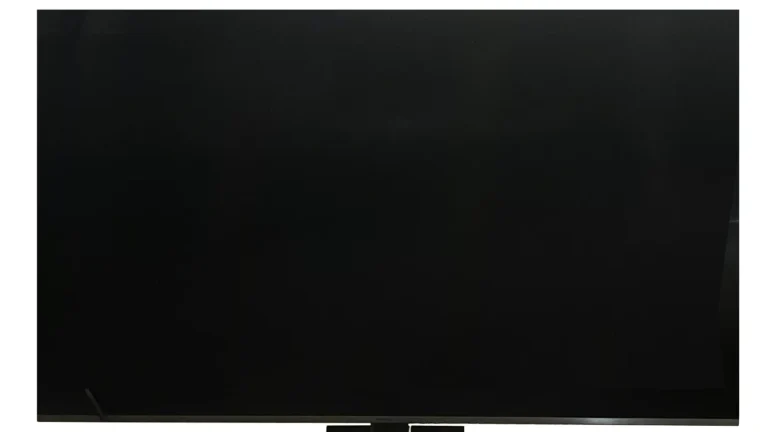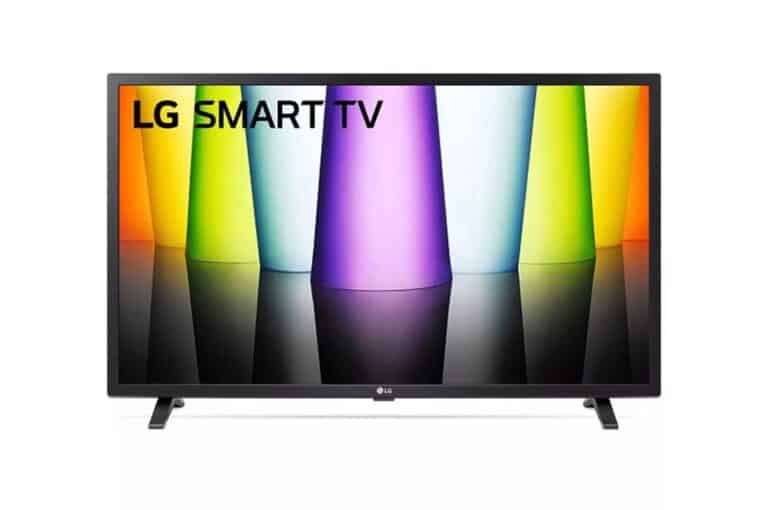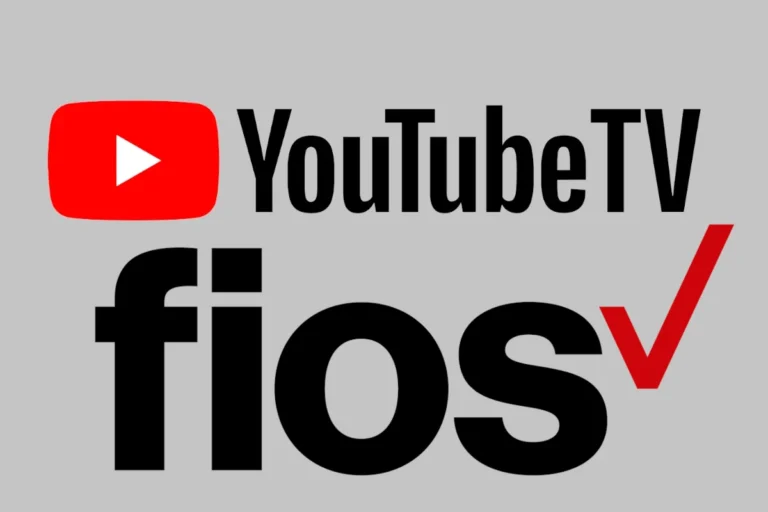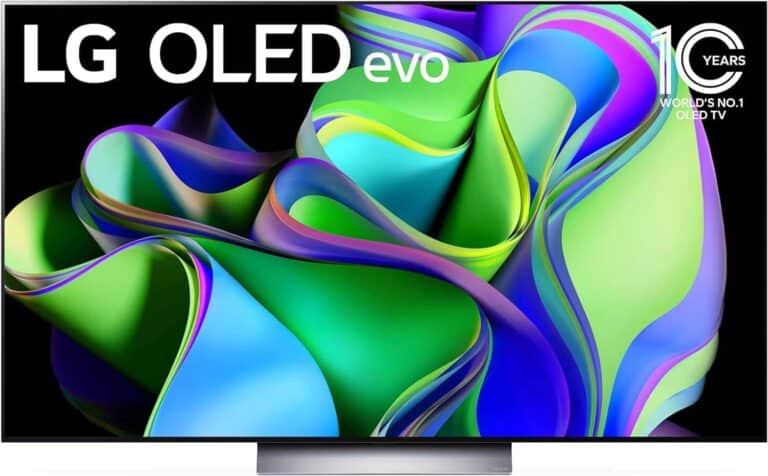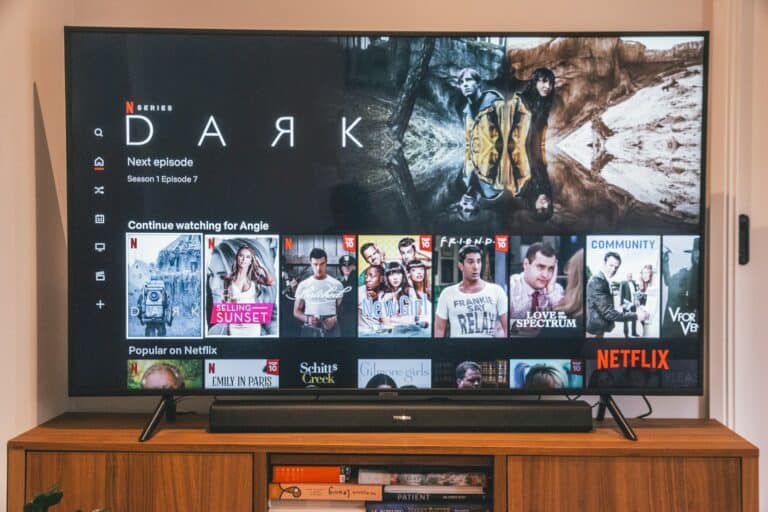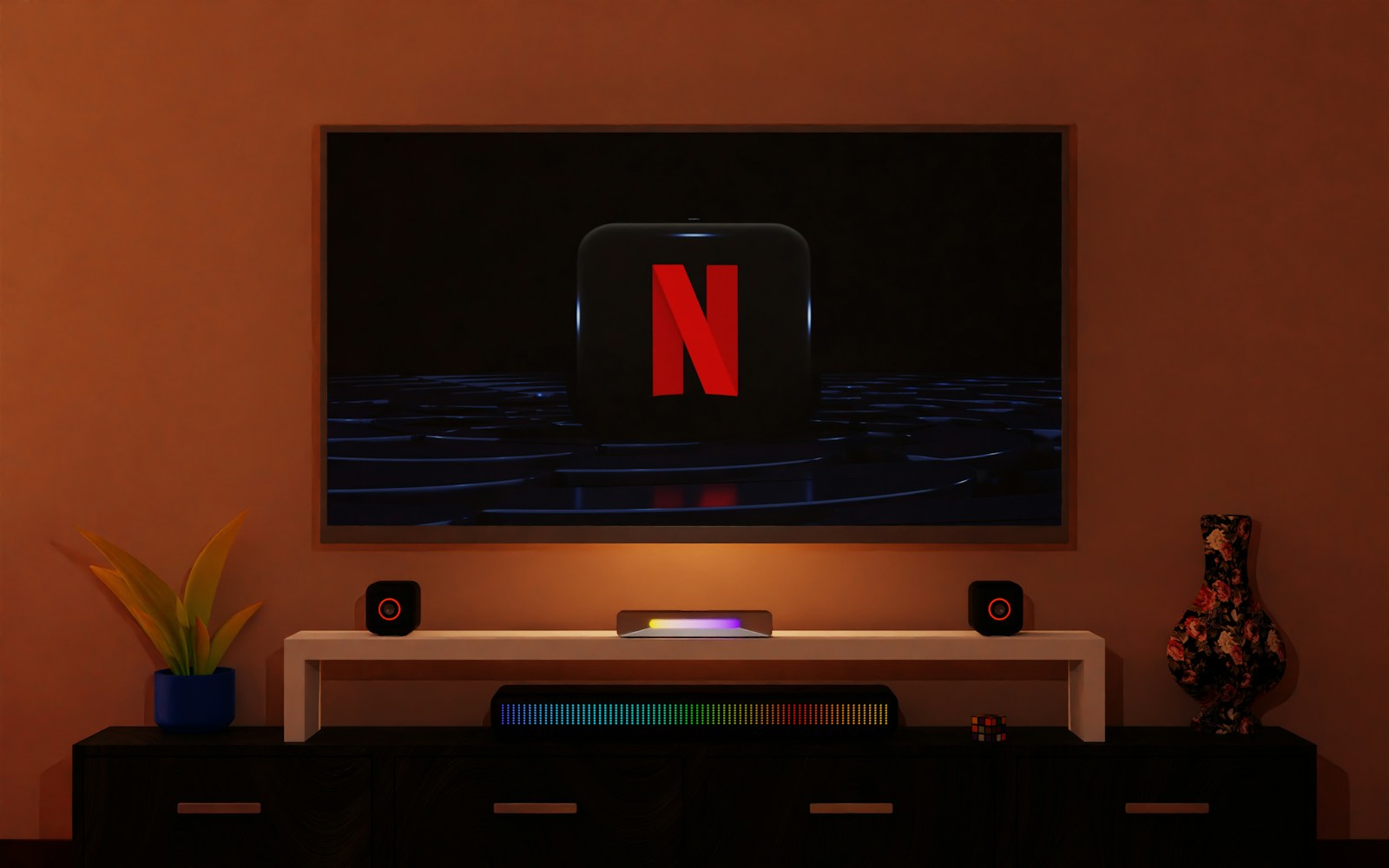
When you buy a new TV, you’ll likely face the decision of whether to purchase an extended warranty. These protection plans go beyond the manufacturer’s warranty and offer peace of mind that your investment is protected long-term. An extended warranty can be particularly valuable for expensive models like OLED TVs or premium 4K smart TVs, where repair costs often exceed what you’d pay for the warranty coverage.
There are mixed opinions about extended warranties for electronics. While some experts claim they’re unnecessary, modern TVs with complex technology are more prone to issues than older models. In fact, some consumers report that newer TVs break more easily and sooner than TVs from previous decades, making additional protection worth considering.
Buying a new TV—especially a high-end OLED or QLED model—is a significant investment. While many experts argue that extended warranties are often unnecessary, there are specific scenarios where purchasing one can be a smart and strategic choice. Here’s how to determine if it’s right for you.
1. Expensive or Premium TVs Have Higher Repair Costs
Modern TVs, particularly large-screen OLED and QD-OLED models, are sophisticated devices. A single panel replacement can cost hundreds of dollars, sometimes approaching the price of a new set. In such cases, a $150–$250 extended warranty that covers parts and labor for several years can provide peace of mind and financial protection.
💡 Example: If your $2,000 OLED TV develops burn-in or panel failure after the manufacturer’s 1-year warranty expires, a repair could cost $800+. An extended warranty could easily pay for itself.
2. Manufacturer Warranties Are Often Short
Most TVs come with a 1-year limited warranty—and that’s it. After that, you’re on your own for repairs or replacements. Extended warranties can stretch coverage to 3–5 years, ensuring protection during the period when most issues are likely to appear.
3. Protection Against Accidental Damage
Some extended warranties (especially “protection plans” from retailers like Best Buy or Costco) include accidental damage coverage—something manufacturer warranties don’t. This can include:
- Screen cracks from mishandling
- Liquid damage
- Power surge protection
If you have kids, pets, or a busy household, this extra coverage can be invaluable.
4. Convenience and Hassle-Free Repairs
Extended warranty providers often offer in-home service, free pickup, or quick replacements. This can save you time and frustration compared to finding authorized repair centers yourself.
5. Added Peace of Mind for Long-Term Use
If you plan to keep your TV for 5+ years, an extended warranty can reduce anxiety about potential failures. It’s a form of “set it and forget it” insurance—especially for those who prefer predictable costs over surprise expenses.
6. Bundled or Discounted Plans Can Offer Good Value
Retailers and credit card companies sometimes offer discounted or free extended coverage:
- Costco includes a 2-year extended warranty automatically with membership.
- Credit cards (like American Express or Visa Signature) often extend manufacturer warranties by an extra year.
Combining these with a purchased plan can create comprehensive, long-term protection at minimal cost.
⚖️ When an Extended Warranty Might Not Be Worth It
While there are benefits, it’s important to recognize when a warranty might not make sense:
- If your TV is under $500, replacement is often cheaper than repair.
- If your credit card already extends warranties, you may be duplicating coverage.
- If you upgrade TVs frequently, long-term protection may be unnecessary.
(For more on this perspective, see CNET and Clark.com, which note that extended warranties are often a poor value for budget models.)
✅ Bottom Line
An extended warranty for your TV can be a smart purchase if:
- You’re buying a premium or high-end model
- You plan to keep it for many years
- You want accidental damage protection
- You value convenience and peace of mind
For budget TVs or frequent upgraders, however, it’s often better to skip the warranty and save your money.
In short: an extended warranty isn’t always necessary—but in the right circumstances, it’s a smart investment that protects both your wallet and your viewing experience.
Key Takeaways
- Extended warranties provide coverage beyond the manufacturer’s warranty for expensive OLED and 4K smart TVs, potentially saving significant repair costs.
- Modern TVs contain complex technology that may be more vulnerable to failures than older models, increasing the value of extended protection.
- The decision to purchase an extended warranty should be based on the TV’s price, technology type, and the specific coverage terms offered.
Understanding Extended Warranties
Extended warranties offer additional protection for your TV after the manufacturer’s coverage ends. These plans vary in cost, coverage details, and duration, making it important to understand what you’re purchasing.
Definition and Types of Extended Warranties
An extended warranty is a protection plan that goes beyond the initial coverage provided by the manufacturer. These warranties are also called service contracts or protection plans in the retail industry.
Most retailers offer different tiers of coverage. Basic plans typically cover mechanical failures and electrical issues. Premium plans may include coverage for accidental damage, power surges, and even pixel burnout.
The duration of these plans varies widely. Most extended warranties for TVs range from 1-5 years beyond the manufacturer’s warranty period.
Pricing is usually based on the TV’s purchase price and the level of coverage selected. For high-end TVs, these plans can represent a significant additional cost.
Comparison with Manufacturer’s Warranty
Factory warranties that come with new TVs are typically limited in both duration and scope. Most manufacturer’s warranties last only 12 months and cover only defects in materials and workmanship.
Unlike extended warranties that might repair or replace your TV, manufacturer warranties often have strict limitations. They rarely cover accidental damage, normal wear and tear, or problems caused by power fluctuations.
Another key difference is service. With a factory warranty, consumers often must ship their TV to a repair center at their own expense. Many extended warranties offer in-home service or local repair options.
The claims process also differs significantly. Extended warranties typically provide dedicated customer service, while manufacturer warranty claims can involve lengthy troubleshooting and documentation.
Benefits of Extended Warranties for TV Owners
Purchasing an extended warranty for your television offers several advantages that can protect your investment and provide financial security. These plans go beyond standard manufacturer warranties to offer comprehensive coverage.
Extended Coverage Period
Extended warranties pick up where manufacturer warranties end, typically providing an additional 2-5 years of protection for your TV. While most manufacturers offer only a 1-year limited warranty, extended warranties continue to protect your investment when you need it most.
This additional coverage becomes especially valuable as TVs age and components begin to wear. Most electronic failures occur after the standard warranty expires, making this extended period crucial for long-term protection.
Many extended warranties also cover issues that manufacturer warranties exclude. These may include:
- Power surge damage
- Pixel burnout
- Software malfunctions
- Connection port failures
Some retailers offer extended warranties for less than $100 that provide 5-6 years of additional coverage, making them an affordable way to protect expensive TV purchases.
Cost Savings on Repairs and Replacements
When a TV malfunctions outside its manufacturer warranty, repair costs can be substantial. Extended warranties can save consumers hundreds or even thousands of dollars on unexpected repairs or replacements.
Modern TV repair typically costs between $150-$400 for minor issues, while major repairs can exceed $700. With an extended warranty, these costs are covered without additional expense.
Many extended warranty plans offer convenient in-home service for larger TVs. This eliminates transportation hassles and potential damage during transit to repair facilities.
Some plans even provide full replacement if repairs would cost more than replacing the unit. This benefit becomes increasingly valuable as TV prices drop while repair costs remain high.
Rather than depleting an emergency savings account for unexpected TV repairs, warranty holders can have these costs covered through their protection plan.
Peace of Mind for Consumers
Perhaps the most significant benefit of TV extended warranties is the peace of mind they provide to owners. Knowing that potential problems are covered allows consumers to enjoy their purchase without worry.
This security is particularly valuable for premium TVs or when purchasing new technology. OLED, QLED, and other advanced displays often contain sophisticated components that can be expensive to repair.
Many warranty providers offer 24/7 support lines for troubleshooting issues. Sometimes problems can be resolved remotely without requiring a repair visit.
Extended warranties also typically offer hassle-free claims processes. Most require only proof of purchase and warranty registration to initiate repair services.
For households where TV is essential for entertainment, education, or work, minimizing downtime is crucial. Warranty coverage ensures quick resolution of problems without lengthy waits to save for repair costs.
Financial Considerations
When evaluating an extended warranty for your TV purchase, understanding the financial aspects can help you make a more informed decision about whether the additional protection aligns with your budget and risk tolerance.
Extended Warranty Costs vs. Potential Repair Costs
Extended warranties for TVs typically cost between $40 and $300, depending on the TV’s price and the length of coverage. For a $1,000 TV, you might pay about $100 for a 3-year plan beyond the manufacturer’s warranty. This represents about 10% of the original purchase price.
Modern TV repairs can be surprisingly expensive. A replacement OLED panel might cost $700-$900, while power supply issues may run $150-$300. Circuit board repairs typically range from $200-$400.
Protection plans extend past the manufacturer’s warranty and can offer financial security against these unexpected costs. However, consumer advocates like Clark Howard suggest that TVs aren’t true investments and may not justify additional protection costs.
A practical alternative is creating a personal savings account for potential repairs. Setting aside the warranty cost in a dedicated fund provides flexibility for addressing problems with any household device.
Deductible and Claim Limit Analysis
Most TV extended warranties come with specific financial parameters that affect their true value. Deductibles—the amount you pay out-of-pocket before coverage begins—typically range from $0 to $100. Lower deductibles generally mean higher upfront warranty costs.
Claim limits are equally important to examine. Some warranties cap the total amount they’ll pay for repairs, often to the original purchase price of the TV. Others limit the number of claims during the coverage period.
Read the fine print carefully before purchasing. Many plans include exclusions for certain types of damage or components. Some warranties become void if you move the TV to a new address without notifying the provider.
Consumer Reports notes that the financial risk of needing repairs without warranty coverage is relatively small for most consumers. Statistically, most major TV repairs occur either early (covered by manufacturer warranty) or very late in the device’s lifespan.
Claims and Customer Service
When your TV has problems, the quality of claims processing and customer service can make or break your warranty experience. Good support makes repairs and replacements simple, while poor service can lead to frustration and delays.
Filing a Warranty Claim
The process of filing an extended warranty claim should be straightforward. Most providers offer multiple ways to initiate a claim, including online portals, phone support, and sometimes mobile apps.
Documentation is key when filing a claim. Customers should keep their original receipt, warranty paperwork, and product information readily available. Many warranty providers require photos of the damaged TV or evidence of the malfunction.
Response times vary by company. Premium warranty services often provide faster claim processing, with some offering 24-hour responses. Before purchasing, it’s wise to check the average claim processing time.
Most quality warranties offer in-home service for larger TVs. This convenience factor is important since transporting a large television for repairs can be difficult and risky.
Evaluating Customer Service and Support
Quality customer support is essential for a positive warranty experience. The best warranty providers offer excellent service with knowledgeable representatives who understand television technology.
Wait times for support can vary dramatically between providers. Some premium services offer dedicated phone lines with minimal wait times, while others might keep customers on hold for extended periods.
Replacement policies differ significantly between warranty companies. Some will repair or replace your TV with an equivalent or better model if they cannot fix it. Others might provide store credit or a depreciated value.
Reading customer reviews can provide insight into real-world experiences with the warranty provider’s claims process. Look for consistent patterns in feedback rather than isolated incidents.
TV Technology and Warranty Needs
Modern TVs come with complex technologies that can benefit from extended protection. Different screen types and smart features present unique vulnerabilities that standard manufacturer warranties might not adequately cover.
Warranty Considerations for Different TV Types
When shopping for an extended warranty, it’s important to consider your specific TV technology. OLED TVs typically have higher repair costs due to their premium screen technology and delicate panels. These TVs are more susceptible to screen burn-in issues, which standard warranties often exclude but extended warranties might cover.
4K TVs with quantum dot technology or high-end processors may experience component failures that become costly to repair. The circuit boards in these models are more complex than older TV models.
LED and LCD models, while generally reliable, can still experience backlight failures or panel damage that’s expensive to fix. These repairs often cost nearly as much as replacing the TV entirely.
Larger screens (55+ inches) typically warrant more consideration for extended coverage simply because replacement costs are higher.
Smart Features and Accidental Damage Protection
Smart TV functionality adds another layer of potential failure points. Many basic manufacturer warranties don’t cover software issues or smart platform failures that can render key features unusable. An extended warranty can provide coverage for:
- Software malfunctions affecting streaming capabilities
- Wi-Fi connectivity hardware problems
- Voice control feature failures
- Remote control replacements
Perhaps most valuable is accidental damage protection, which is rarely included in manufacturer warranties but often available in extended protection plans. This covers incidents like:
- Screen cracks from impact
- Liquid damage from spills
- Electrical surge damage
- Physical damage from children or pets
Modern TVs are increasingly wall-mounted in homes, creating installation risks that extended warranties sometimes cover. Some premium protection plans even include professional recalibration services if picture quality degrades over time.
Complementary Protection Strategies
While an extended warranty provides valuable coverage for your TV, combining it with other protection methods can create a comprehensive safety net for your investment.
Credit Card Purchase Protection
Many credit cards offer built-in purchase protection that can supplement your TV’s extended warranty. These benefits typically cover damage or theft for a limited period after purchase—usually 90 to 120 days.
Premium credit cards may extend this coverage for longer periods and include additional benefits like price protection if the TV goes on sale shortly after your purchase. This protection often works as secondary coverage, meaning it applies after your extended warranty coverage is used.
To activate these benefits, you must purchase the TV entirely with the eligible credit card. Be sure to save your receipt and credit card statement as proof of purchase.
Combining Warranties with Home Warranty Services
Home warranty services can work alongside your TV’s extended warranty to provide multi-layered protection. While extended warranties cover specific items like your TV, home warranties typically cover multiple appliances and systems in your house.
Some home warranty companies offer electronics protection plans that can be added to your base coverage. These plans might handle issues that your TV’s extended warranty doesn’t cover, such as power surges or connection problems related to your home’s electrical system.
Before purchasing both, carefully review the coverage details to avoid paying for duplicate protection. The best strategy is to identify gaps in each protection plan and use them to complement each other.
Consumer Insights
Understanding how consumers view and use extended warranties can help you make an informed decision about your TV purchase protection. Data from market research and consumer feedback reveals important patterns in warranty usage and satisfaction.
Consumer Reports and Warranty Utilization
Consumer Reports suggests that many extended warranties may not always deliver full value to purchasers. Their analysis shows that modern TVs are generally reliable, with most serious defects appearing during the manufacturer’s warranty period.
However, this doesn’t tell the complete story. Extended warranties become particularly valuable for high-end TVs where repair costs can exceed $300-500. Many premium TV brands like Samsung, LG, and Sony offer components that may be expensive to replace after the standard coverage ends.
Survey data indicates that approximately 1 in 5 TV owners who purchase extended warranties end up filing a claim. While this percentage might seem low, those who did use their warranty reported high satisfaction levels, particularly for claims involving screen issues or electronic failures.
Market Trends in Extended Warranties
The extended warranty market has evolved significantly in recent years. Coverage options have become more comprehensive, often including benefits like instant upgrades when replacement is needed.
Most protection plans now offer additional features beyond basic repair coverage:
- In-home service for larger TVs
- Accidental damage protection (increasingly common)
- Power surge coverage
- Remote control replacement
Market research shows that warranties are most frequently purchased for TVs in the $1,000+ range. This makes sense as these represent larger investments worth protecting.
Many providers now use digital systems that make filing claims simpler, addressing the historical consumer frustration with warranty processes. Customer satisfaction ratings for warranty services have improved by approximately 22% over the past five years.
Legal and Policy Considerations
Understanding the legal aspects of TV warranties helps consumers make informed decisions and protects their investments. Different warranty types come with varying levels of consumer protection and specific terms that can affect your rights.
Warranty Agreements and Consumer Rights
When purchasing an extended warranty for your TV, it’s essential to thoroughly read the agreement. These contracts outline what is covered, exclusions, and the claim process.
The Federal Trade Commission advises consumers to compare extended warranties with manufacturer’s warranties before purchasing additional coverage. This comparison helps identify if the extra benefits are worth the cost.
Most states have specific consumer protection laws governing warranties. These laws may provide additional rights beyond what’s stated in the warranty agreement.
Keep documentation of all warranty information, including:
- Purchase receipts
- Warranty cards
- Service records
- Claim communications
Retailer vs. Manufacturer Extended Warranties
Retailer and manufacturer extended warranties differ significantly in terms of coverage and service. Manufacturer warranties typically focus on defects in materials and workmanship, while retailer plans may offer broader protection.
Third-party warranty companies often provide retailer extended warranties, which means claims are processed through the warranty company rather than the TV manufacturer.
Some key differences to consider:
| Feature | Retailer Warranty | Manufacturer Warranty |
|---|---|---|
| Coverage | Often more comprehensive | Usually limited to defects |
| Service Options | Multiple repair facilities | Authorized service centers only |
| Transfer Rules | May transfer to new owners | Often non-transferable |
Manufacturer warranties might maintain your device’s official service status, which can be important for premium TV brands with specialized components or software.
Frequently Asked Questions
Extended TV warranties provide coverage beyond manufacturer protection and can save consumers money on repairs or replacements. These plans come with various coverage options, costs, and terms that consumers should understand before purchasing.
What advantages does an extended TV warranty offer over the standard manufacturer’s warranty?
Extended warranties typically offer longer coverage periods than manufacturer warranties. While most manufacturers only cover defects for 1-2 years, extended warranties can protect your TV for up to 5 years.
These plans often include additional services like in-home repairs, which might not be available with standard warranties. Many extended warranties also cover power surges and component failures that occur after the manufacturer’s warranty expires.
Some premium plans provide technical support for connecting devices and troubleshooting issues, giving customers more comprehensive assistance than basic manufacturer coverage.
How does accidental damage coverage in TV protection plans benefit consumers?
Accidental damage protection covers mishaps that manufacturer warranties typically exclude. This includes screen cracks from objects hitting the TV or damage from the television being knocked over.
Children and pets can pose risks to televisions, making this coverage valuable for families. Some plans even cover liquid spills, which can be catastrophic for electronic components.
This coverage eliminates the need for consumers to pay full replacement costs for accidents, which often occur during the TV’s lifespan.
What are the main factors to consider when choosing an extended warranty for your television?
Coverage duration should align with how long you plan to keep the TV. Premium models might warrant longer protection plans than budget televisions.
Cost comparison is essential—ideally, the warranty should be less than 20% of the TV’s purchase price to be considered economical.
Coverage details matter significantly. Consumers should verify exactly what malfunctions, damages, and scenarios the warranty covers versus excludes.
Service convenience differs between plans. Some offer in-home repairs while others require shipping the TV to a service center, which can be impractical for large screens.
Could you outline the differences between third-party TV warranties and brand-specific options?
Brand-specific warranties typically use authorized technicians familiar with that particular brand’s technology. This can lead to more effective repairs and genuine replacement parts.
Third-party warranties often cost less while covering multiple devices under one plan. These companies frequently partner with local repair shops for faster service.
Claim processes differ significantly. Manufacturer warranties might have streamlined procedures, while third-party companies sometimes require more documentation before approving repairs.
Customer service quality varies widely among third-party providers, whereas brand-specific plans generally maintain consistent support standards.
What are some potential limitations or drawbacks of extended TV warranties?
Coverage exclusions can surprise consumers. Many plans exclude issues like pixel burnout, damage from power surges without surge protectors, or cosmetic damage.
Some extended warranties have deductibles that must be paid before repairs are covered. These additional costs reduce the overall value of the protection plan.
Many experts consider extended warranties to be largely unnecessary and a waste of money for most modern televisions, as they have become increasingly reliable.
Claim denials can occur if consumers fail to maintain proper documentation of the issue or if the problem falls into an exclusion category.
How might the cost of an extended TV warranty compare to common TV repair or replacement expenses?
Extended warranties typically cost between $100-$500 depending on TV value and coverage length. For high-end TVs costing thousands of dollars, this represents a small percentage of potential replacement costs.
Common repairs like power supply replacement or main board issues can cost $200-$400 when paid out-of-pocket, potentially making a warranty worthwhile for a single major repair.
Some warranties offer “no lemon” policies that provide a replacement TV if multiple repairs are needed, adding value beyond simple repair coverage.
For budget TVs under $500, the extended warranty might cost nearly as much as a replacement, making it less economical for inexpensive models.

